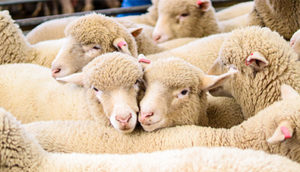Read the latest information on
Foot-and-mouth disease
 Buying or selling sheep? The movement of livestock presents one of the biggest risks for spreading disease to new properties and flocks. That’s why, when livestock are sold, it’s important to also provide any records related to their health and well-being. This assists the new owner in providing the best possible care to those animals in the future and to integrate them into an existing flock.
Buying or selling sheep? The movement of livestock presents one of the biggest risks for spreading disease to new properties and flocks. That’s why, when livestock are sold, it’s important to also provide any records related to their health and well-being. This assists the new owner in providing the best possible care to those animals in the future and to integrate them into an existing flock.
The national Sheep Health Declaration is a document which is recommended for sheep meat and wool producers to help them capture and share health information related to a consignment of sheep.
WoolProducers Australia Policy Manager, Mr Ashley Cooper, believes the Declaration is a must for sheep and wool producers whenever sheep change hands.
“Our advice to our producers all over Australia is pretty simple, always ask for a Declaration when buying sheep, and always provide one when you send a consignment, unless it’s to slaughter,” Mr Cooper said.
“That way you know the history of the sheep you’re buying, you are better prepared to consider the risks they might present.”
A new version of the Sheep Health Declaration has just been published on the Farm Biosecurity website. This update helps the Declaration link in with National Vendor Declarations (NVDs) and other documents which are part of the Livestock Production Assurance program, run by the Integrity Systems Company. It will also soon be available in the electronic NVD portal, making it easier to provide all the required and recommended paperwork for a livestock sale in one go.
The newest version of the Declaration has less focus on ovine Johne’s disease (OJD) following national deregulation of the disease. It increases the amount of information recorded for footrot, and offers more space to list treatments, including vaccinations, for other conditions.
There is also more space to include other information that producers want to highlight, such as participation in active Regional Biosecurity Plan areas, or One Biosecurity in South Australia.
In addition to being a legal requirement in certain jurisdictions, AuctionsPlus now require sheep sales to be accompanied by a Sheep Health Declaration. It is important that vendors are aware of their responsibilities to the purchaser and the industry as a whole, especially if they are engaging a third party to buy or sell on their behalf.
Sheep Producers Australia Policy Manager, Mr Stephen Crisp, wants to encourage producers to use the new Declaration to manage their flocks.
“If you haven’t used one before, now is definitely the time to start,” Mr Crisp said.
“The Declaration has never been easier to use, and it really is the best tool to capture important information from a supplier or provide it to a buyer. Buyers can make more informed purchases through improved awareness of the history of the animals being purchased.”
The national Sheep Health Declaration can be downloaded from the Farm Biosecurity website under Toolkit. Visit the Sheep Industry page on Farm Biosecurity to find out more.